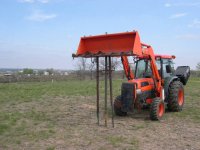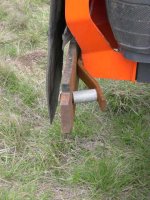I've posted an answer several times but don't know where it went.
Anyway I took a couple of 2 inch square tubing and determined the length I wanted. Then I welded a set of ears 1/8 inch thick plate to both sides of one piece. Drilled a hole through both ears and then determined the leverage I wanted and drilled through the second piece and ran a bolt through them both. At the end of the piece to be used for pulling I drilled a hole through it then ran a bolt through it. Welded it in and cut the head off. Heated both ends and bent them up. Welded a base on the standing piece and got some chain went to pulling. Works great and takes on fuel to operate.
Anyway I took a couple of 2 inch square tubing and determined the length I wanted. Then I welded a set of ears 1/8 inch thick plate to both sides of one piece. Drilled a hole through both ears and then determined the leverage I wanted and drilled through the second piece and ran a bolt through them both. At the end of the piece to be used for pulling I drilled a hole through it then ran a bolt through it. Welded it in and cut the head off. Heated both ends and bent them up. Welded a base on the standing piece and got some chain went to pulling. Works great and takes on fuel to operate.



